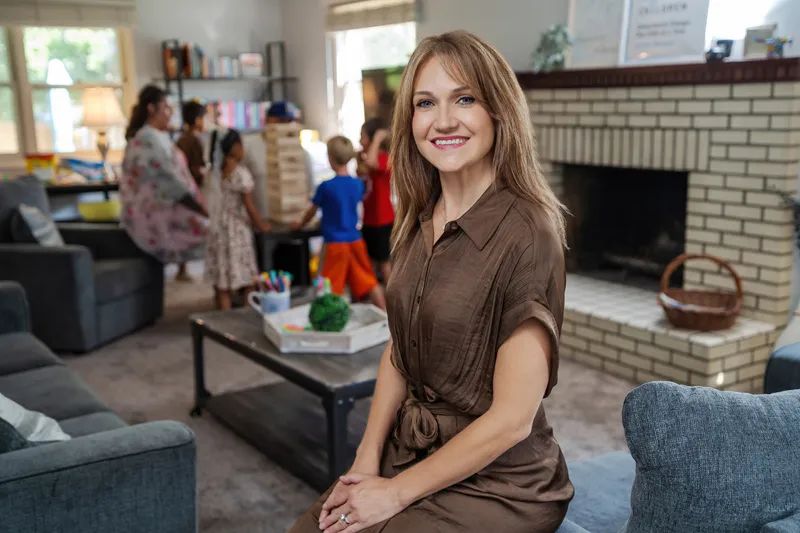
Nina Hernandez
Helping Kids for 12 Years, ‘No Matter What’
Nina Hernandez had spent many years working for nonprofits before deciding she wanted to focus on children’s services. But working in the field left her feeling that something was wrong, that something was missing.
“It’s easy to bad-mouth the system,” she says, “because the system is super-complicated, but I would see kids coming in over and over and over again” — cycling from foster home to group home, then on to another foster home — “and that was the hardest part to see.”
Other kids were still with their biological families but were similarly adrift, dealing with various traumas by receiving help from one agency after another, or becoming entangled in the juvenile justice system.
“I kept wondering to myself: there has to be something more. There has to be something more innovative,” Nina says.
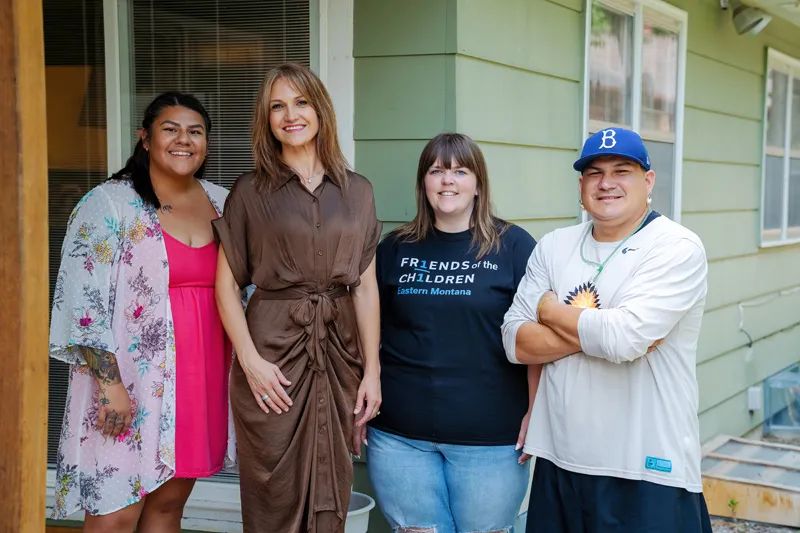
That something came along a couple of years ago, when multiple friends began reaching out to her about a new organization that was coming to Billings and was looking for an executive director. Nina started reading up on Friends of the Children, a nonprofit that was founded in Portland, Oregon, in 1993 and has since opened 32 chapters around the country.
“It just completely spoke to me,” Nina says. “It was something completely different.” Better yet, she says, Friends of the Children seemed to have developed a model that was potentially system-changing. She was hired as executive director in the fall of 2022, and Friends of the Children-Eastern Montana began offering its services in the spring of 2023.
Friends of the Children works by identifying pre-kindergarten children who would most benefit from the program, then offering them one-on-one mentoring for three to four hours a week, all year long, until they graduate from high school.
That’s what was missing in other child-welfare agencies and organizations, Nina says. Most organizations, especially those that bill Medicaid for their services, can afford to keep children around for only a limited time. Another crucial difference is that her organization’s mentors are not volunteers. They are full-time, paid professionals.
“While we love volunteers — volunteers make the world go round — that’s not us,” Nina says. “The key is that long-term commitment, 12-plus years. We’re able to commit to them and tell them, ‘We’re with you no matter what, literally no matter what.’”
Each mentor, or friend as they are called, is paired with eight children. They work with the children one-on-one, as well as with their families and caregivers and in the schools.
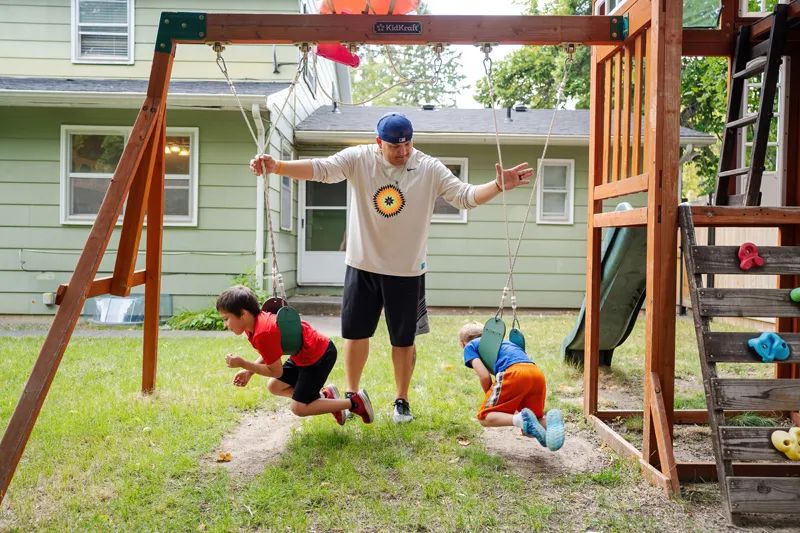
Another crucial aspect of the organization is that it constantly subjects itself to internal and external research and evaluation. Friends work with the children four days a week and spend most of their Fridays inputting data. They record every interaction with children and their caregivers, tracking the progress of their young charges toward a wide variety of goals and “core assets,” including problem-solving, perseverance, hope and self-management.
Externally, Friends of the Children has been the focus of academic researchers from Stanford, the University of Washington and the Harvard Business School Association of Oregon, among others.
In long-term studies of people who had been with Friends of the Children through high school graduation, researchers found that 92 percent of them enrolled in post-secondary education, served their country or entered the workforce. Eighty-three percent of them graduated from high school, 93 percent avoided involvement in the juvenile justice system, and 98 percent avoided becoming parents during their teens.
And when looking at those last three metrics, consider that researchers also found that among the parents of these graduates, 50 percent didn’t make it through high school, 60 percent had been involved in the criminal justice system, and 98 percent started parenting during their teens.
The most striking finding came from a Harvard Business School Association study, which estimated that for every $1 invested in Friends of the Children, the community saves $7 in social costs. Helping one child saves the community more than $900,000, over the life of the child.

The push to open a Friends of the Children chapter in Billings was driven by Bill Underriner, president and CEO of Underriner Motors who now chairs the chapter’s board of directors. He used to own another car dealership in Klamath Falls, Oregon, he says, and about five years ago he was approached by the head of the Friends of the Children there to learn more about the program.
Underriner liked what he saw, and the dealership began working on fundraisers for the group. In time, he says, as he learned more about the success of the organization, “I got the idea that we ought to bring it to Billings, and that’s how that happened.”
With the help of an expansion team from the national Friends of the Children, Underriner set up some informational meetings, identifying potential partners and donors. The donors were key, because to open a new chapter in a city or a region, local sponsors are required to come up with $1 million in start-up funding.
They met that goal with the help of early supporters that included Bill and Mary Underriner, Margaret A. Cargill Philanthropies, Scheels, and Kim and Pat Lewis. With that funding in place, the newly formed board of directors hired Nina as its director. What made her stand out?
“Her personality,” Bill says, “her drive, where she worked before, and really, she seemed like she really cared about kids.”
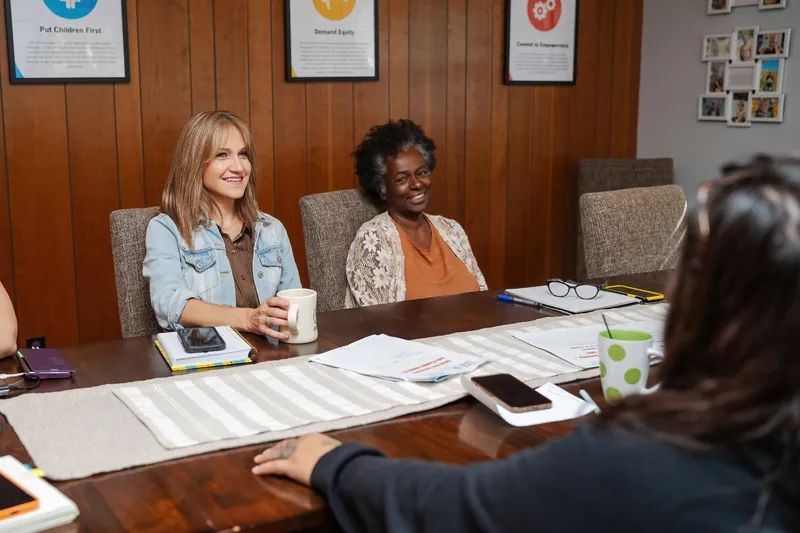
Nina, a native of Billings who earned a degree in English from the University of North Texas, entered the nonprofit world by working as a volunteer fundraiser for the Cystic Fibrosis Foundation in Dallas, from which she transitioned into being the foundation’s full-time event coordinator.
After she and her husband, Ryan Duffy — they met in a youth group at Billings First Church — adopted their first child, they decided to move back to Billings to be closer to their families. Nina worked for the American Heart Association, eventually becoming director of the statewide organization.
In 2013 she got an offer from Youth Dynamics, a children’s behavioral health organization, which she joined as its development director. Nina says she “absolutely loved working with them,” and the job opened her eyes to the magnitude of the difficulties families and children faced in Montana.
The state has some of the highest rates of children with multiple ACEs, or adverse childhood experiences, and one of the highest suicide rates. The kids helped by Friends of the Children often have incarcerated parents, Nina says, or parents with substance abuse. They come from families affected by domestic violence, or are related to murdered or missing indigenous persons.
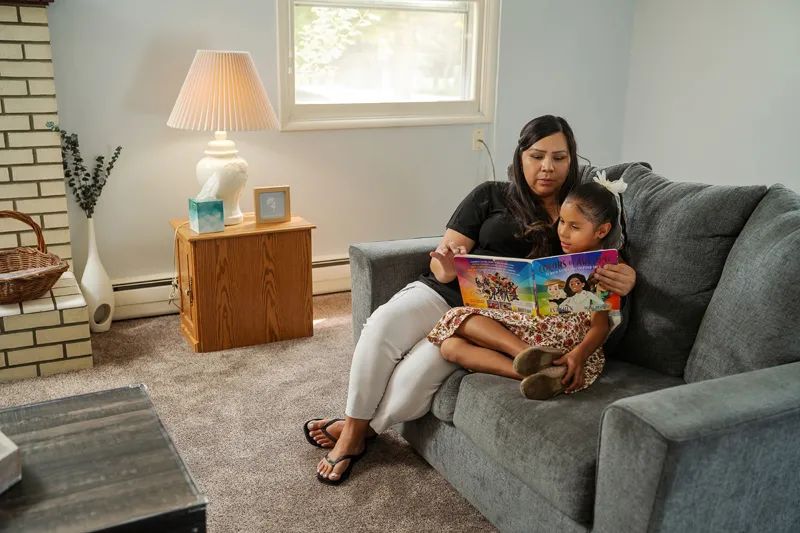
Another aspect of Friends that appealed to Nina was that it is “equity-based,” meaning it “calls out, in really courageous ways, structural racism, and we call out generational poverty.” Because of those systemic obstacles, the kids they were serving, even before reaching kindergarten age, faced unimaginable challenges through no fault of their own. So often, Nina says, there is an appeal to the old idea of “pulling yourself up by your bootstraps.”
“Well,” she says, “and I’ve been saying this for a long time, what if we don’t have bootstraps?”
Nina applied the same values to the hiring process.
“I knew I wanted to be equity-minded when I hired, and I knew who we were going to be serving because of the disparities here in Billings,” Nina says. “I knew we were going to be serving a lot of Indigenous kids.” Although only 9 percent of kids under the age of 19 identify as Indigenous in Yellowstone County, they make up half the youth in foster care.
The first friend Nina hired was Walter Runsabove, an enrolled member of the Northern Cheyenne tribe and an affiliate of the Oglala Lakota and Hudesana Nakoda. The second friend was Rian St. Pierre, an enrolled member of the Crow Tribe with lots of Chippewa-Cree family. They have since hired two other friends, RayQuan Evans and Jessie Wilson.
Rian has been working as a mentor with Friends of the Children-Eastern Montana since May 2023, and she has developed strong relationships with the eight young girls she’s responsible for.
“I’m so close to all of them at this point,” she says. “I am just fully invested in them. Not just because it’s my job, but for no other reason than to just be there when they need somebody.”
She has also grown close to their families and caregivers. “With a lot of my parents or caregivers, it’s like I’m an auntie or a big sister,” she says. “I think that just being Native in the community, too, I can relate a lot to my kids. About half of mine are Natives, or mixed of some kind.”
When she considers that she might be with her girls for the next 10 or 11 years, Rian says, “I think sometimes it’s overwhelming, but not in a bad way. In a way of, like: ‘We’re doing this!’ And it’s working. What we’re doing is working.”
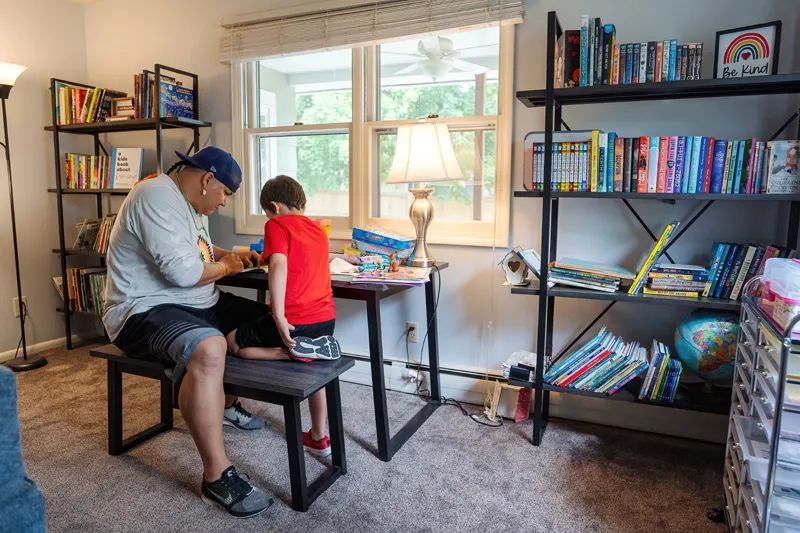
When Bill Underriner was introducing the concept of Friends to the community, two early, enthusiastic partners were Orchard Elementary, part of Billings Public Schools, and Lockwood Schools. Among the original cohort of 16 children, eight attended Lockwood and eight were at Orchard.
More public schools are now partners, since some of the children moved and started attending new schools, but Lockwood and Orchard are still key partners. “Lockwood and Orchard were awesomely innovative and grabbed this before anyone else did,” Nina says.
Friends of the Children works with the schools, and with Child and Family Services, to identify children in foster care or at highest risk of entering foster care, and who would most benefit from intervention.
Once the friends started working with their children in the classroom, Nina says, it was quickly obvious that their presence benefited the whole classroom, not just the students assigned to the mentors.
“Our friends have really close relationships with the teachers in our schools and end up being a huge help in the classrooms,” she says. As Rian puts it, they tell the teachers, “We’re here for whatever capacity you need us to be.”
Friends can help their children directly with their schoolwork, but they’re also there to recognize when the kids, often overwhelmed with life’s challenges, need a break. Rian says they’ll “go for laps” in the hallways, find a quiet space to read a book together or just relax and talk.
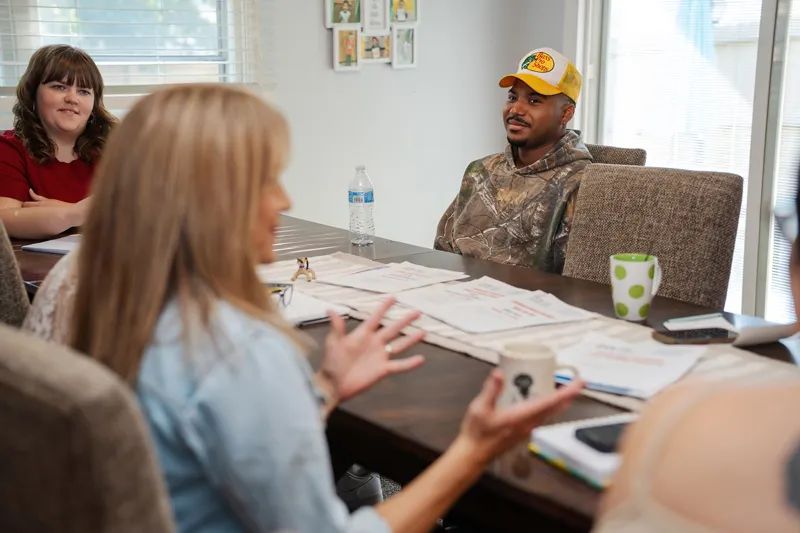
The Eastern Montana chapter of Friends is located in an old sorority house on Virginia Lane, which the organization rents from MSU Billings at a reduced rate. The “clubhouse” as it is known, houses offices, but it also has a family room, a big dining room, a playroom downstairs and a backyard for outdoor activities.
The children often visit there for tutoring or just to hang out with their friends, especially in the summer. Friends of the Children also partners with multiple community groups for outings to places like the YMCA, the Billings Public Library and city parks.
Other members of the local Friends team are Dawn Wilson, operations manager, and Myra Deavel, program director. In mid-summer, Nina was still looking for a development director.
Nina says their goal is to obtain most of their funding from individual donors, but also to continue relying on foundations and grants. Within five years, she says, they would like 30 percent of their income to come from public funding. Nina says a potential donor recently told her, “’You are doing a public service. You have got to look at public funding.’ That was really good for me to hear.”
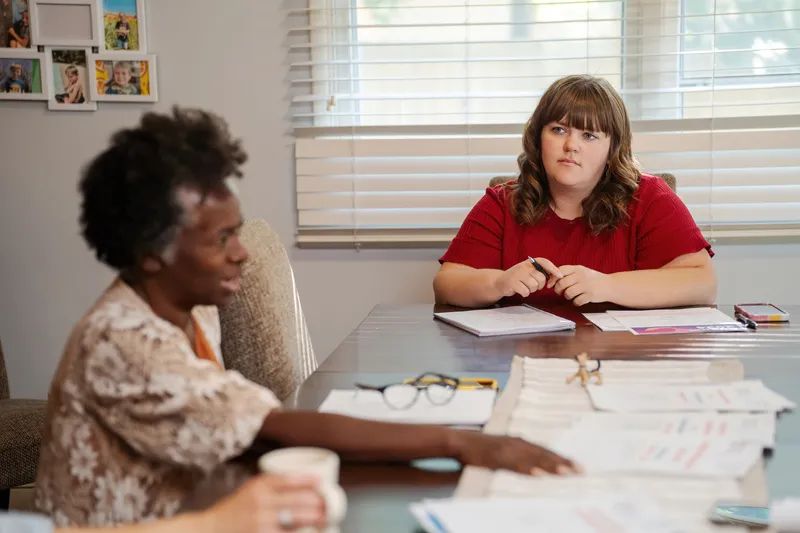
All the children served by the Billings chapter have moved on to the next grade, something unlikely to have happened otherwise, and nobody hired by Nina has left the group, which is rare in the health and human services field, where burnout and turnover are high.
Like other members of Friends of the Children, the local chapter is also working hard on a new 2Gen, or two-generation initiative, aimed at building family well-being by working simultaneously with the children and the adults in their lives. “We can serve the children until we’re blue in the face,” Nina says. “But we can’t do that until we make sure that their families are also successful.”
As for the future, Nina says, it will probably be necessary to open another clubhouse someday, and they would like to open satellites on the Crow and Northern Cheyenne reservations, both of which have expressed great interest in the concept. The Western Montana chapter, located in Missoula, opened in 2021 and already has a satellite clubhouse in Polson, serving the Confederated Salish and Kootenai Tribes on the Flathead Indian Reservation.
Nina, who with her husband eventually adopted another child and now have a 15-year-old son and a 12-year-old daughter, said she gravitated toward working with youths because of her own children, “because they are my world.”
Now, with 32 kids being served by the local Friends and more on the horizon, she, like Rian, is looking toward the future, toward a particular high school graduation.
“I was to see this first cohort walk down the aisle,” she says. Then she laughs and adds, “Not the wedding aisle. I mean, that would be cool too, but walk down the aisles of the Metra.”











